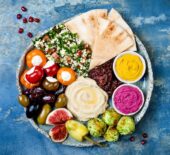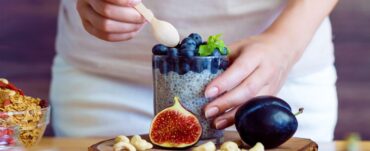You are not alone if every meal is a battle trying to get your kids to select and eat a meal which is going to give them the nutrition they need for a healthy life. One strategy you may like to try is using different food environments as opportunities to make selecting nutritious food choices fun and a game for your kids. This may help your kids to skip the chips and chocolate and opt for meals and snacks which provide them with the nutrition and energy they need to grow and live healthy lives.
Here are three learning opportunities you can use to help your kids start to understand food more than simply the taste. Educating on the health and nutrition benefits early can help your children to get a head start for life on selecting the best choices available.
Take Time to Explain Food
Before you can expect your kids to make the healthiest choices they need to understand why. Taking the time to educate your children on how to read food labels and why this is important for energy and life is a wise first step. Remember kids are not interested in the future when they are adults but are more focused on how nutrition will affect them now. For example, by choosing wholegrains like wholegrain crackers instead of refined white crackers you will have more energy which will last longer to play with your friends.
The key components to reading a food label are:
To begin with, go to the column which says per one hundred grams.
- Firstly, check the added sugar is no more than fifteen grams for food and fifteen grams for drinks per one hundred grams or mills.
- Secondly, the salt is less than one hundred and twenty milligrams per one hundred grams for a gold star or four hundred milligrams for a silver medal.
- Thirdly, check the total fat content to be less than ten grams. Then less than three grams of saturated if a food product of one point five grams if a drink.
- Finally, the fibre content is three grams or more per serve.
Secondly, take the time to explain how to make a balanced plate. This includes a plate which is structured:
- Half the plate filled with produce. This is most like vegetables for lunch and dinner and fruit or vegetables for breakfast.
- One quarter a lean protein source like lean meat, poultry, eggs, beans, dairy, or tofu.
- The third component of a healthy plate is one quarter a source of wholegrains. Sources of wholegrain can include brown, black, or red rice, oats, wholegrain pasta, quinoa, wholegrain bread, wholegrain couscous, or wholegrain crackers.
Start In the Kitchen
Get your children involved in deciding and preparing the meals. Create a fun challenge to create meals using the healthy plate model. A helpful reminder could be having a drawing or print out of what a healthy plate model looks like and stick this on the fridge or the inside of the cupboard.
Another strategy is creating a list with your children of healthy meal and snack ideas for when there is lack of inspiration.
Make the Shops a Fun Adventure
Now that your kids understand food labels, set a challenge to select the best choices available from your shopping list. If needed have a printout of this blog as a reminder of what to look for when reading food labels.
Take home message: It does not need to be a battle to get your kids to choose and select healthy food choices. Taking the time to educate on how to select the healthiest food choices and then making a game from the lesson may be the key to helping your kids make the best food choices for health and wellbeing.








